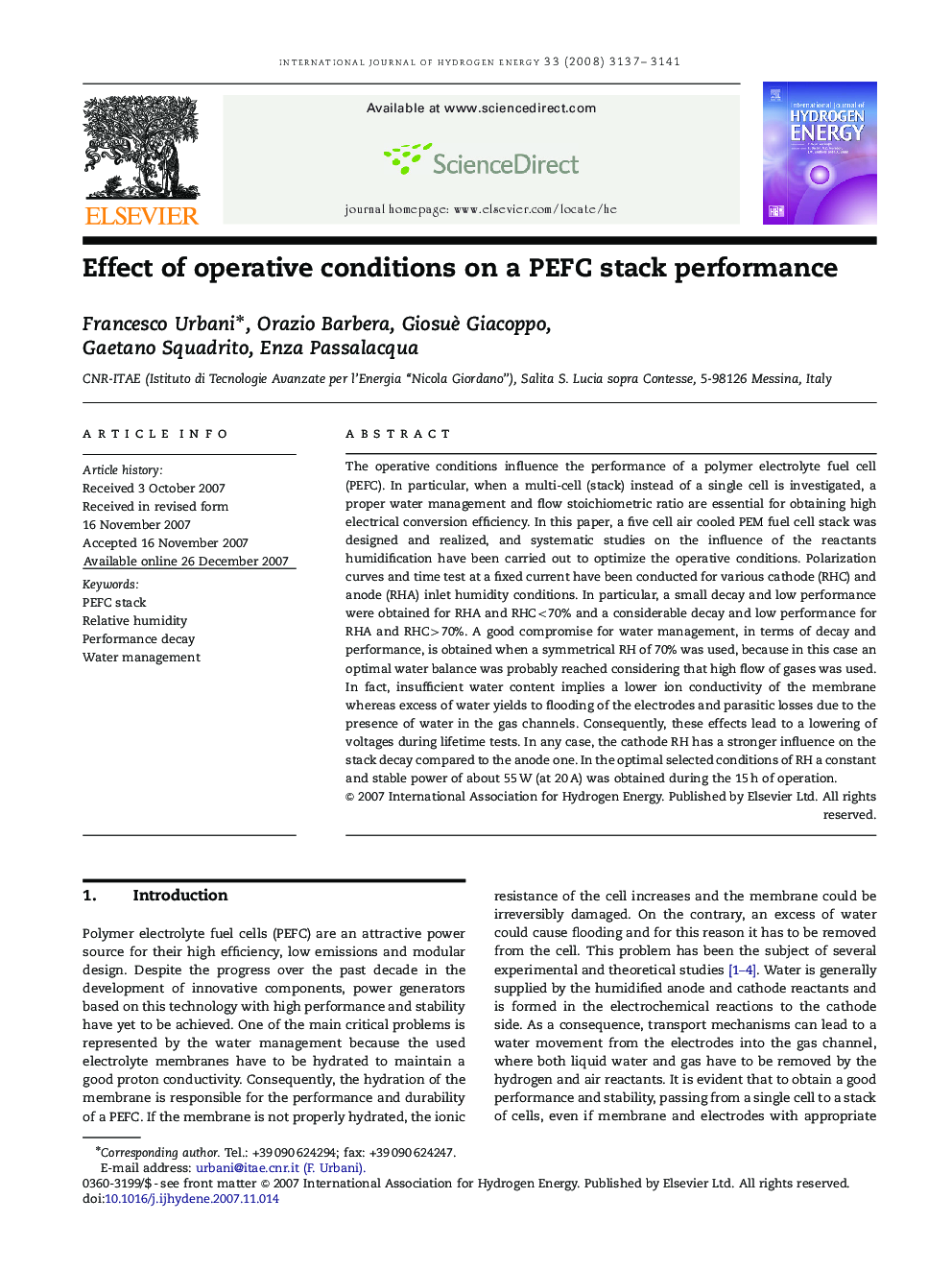| Article ID | Journal | Published Year | Pages | File Type |
|---|---|---|---|---|
| 1279617 | International Journal of Hydrogen Energy | 2008 | 5 Pages |
The operative conditions influence the performance of a polymer electrolyte fuel cell (PEFC). In particular, when a multi-cell (stack) instead of a single cell is investigated, a proper water management and flow stoichiometric ratio are essential for obtaining high electrical conversion efficiency. In this paper, a five cell air cooled PEM fuel cell stack was designed and realized, and systematic studies on the influence of the reactants humidification have been carried out to optimize the operative conditions. Polarization curves and time test at a fixed current have been conducted for various cathode (RHC) and anode (RHA) inlet humidity conditions. In particular, a small decay and low performance were obtained for RHA and RHC<70%RHC<70% and a considerable decay and low performance for RHA and RHC>70%RHC>70%. A good compromise for water management, in terms of decay and performance, is obtained when a symmetrical RH of 70% was used, because in this case an optimal water balance was probably reached considering that high flow of gases was used. In fact, insufficient water content implies a lower ion conductivity of the membrane whereas excess of water yields to flooding of the electrodes and parasitic losses due to the presence of water in the gas channels. Consequently, these effects lead to a lowering of voltages during lifetime tests. In any case, the cathode RH has a stronger influence on the stack decay compared to the anode one. In the optimal selected conditions of RH a constant and stable power of about 55 W (at 20 A) was obtained during the 15 h of operation.
